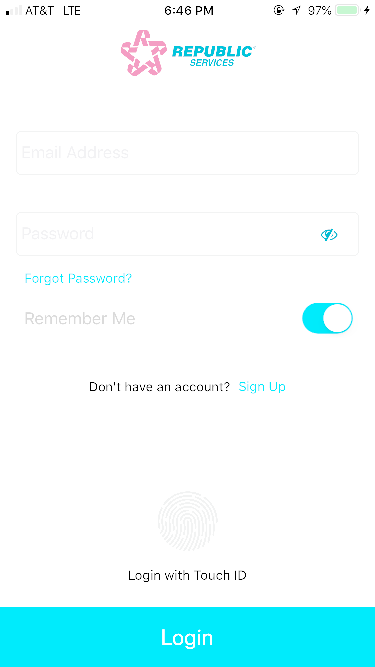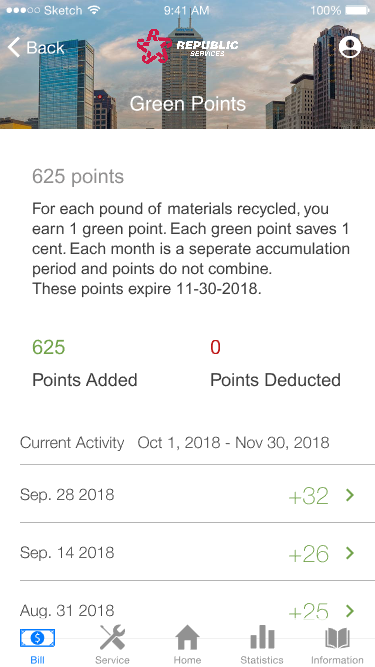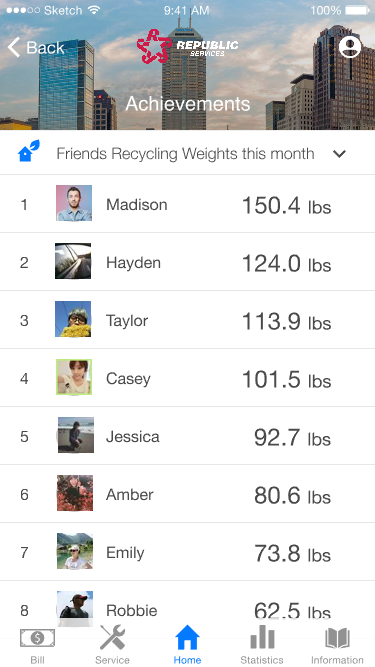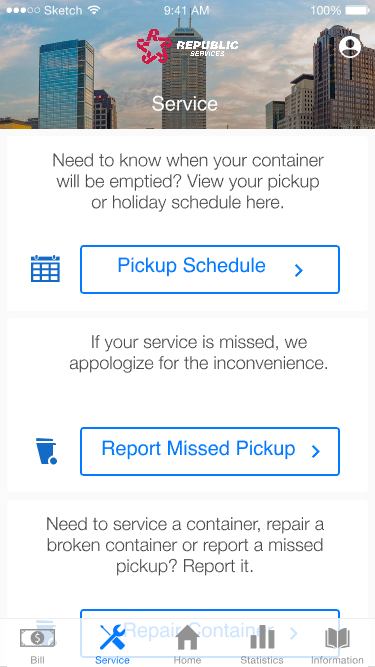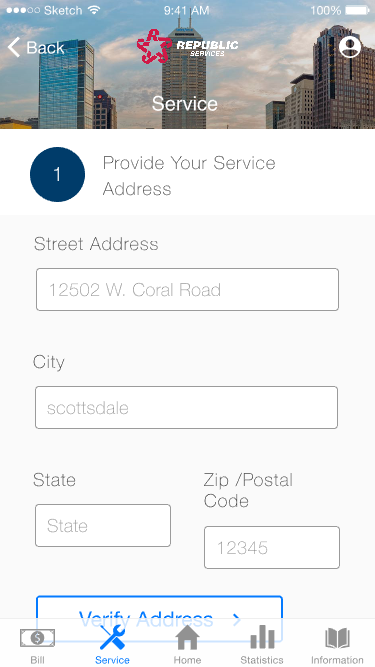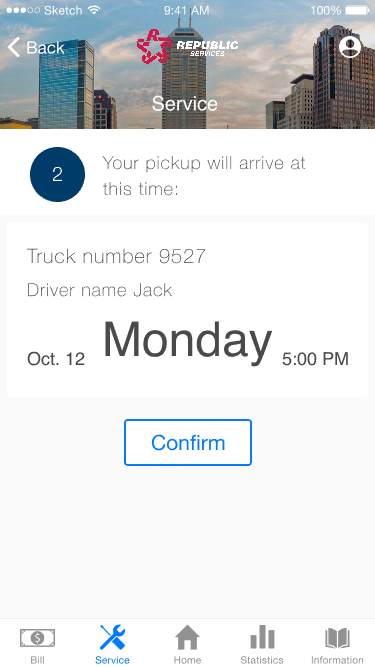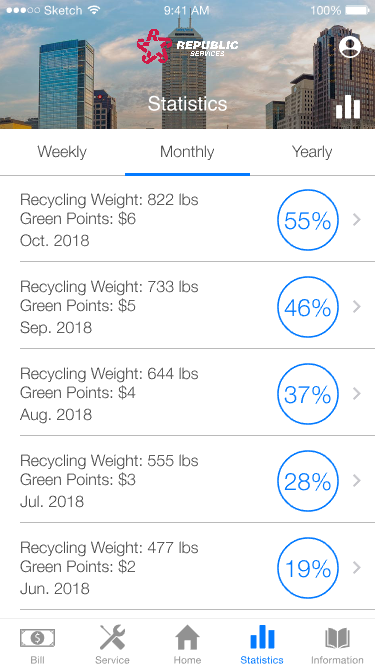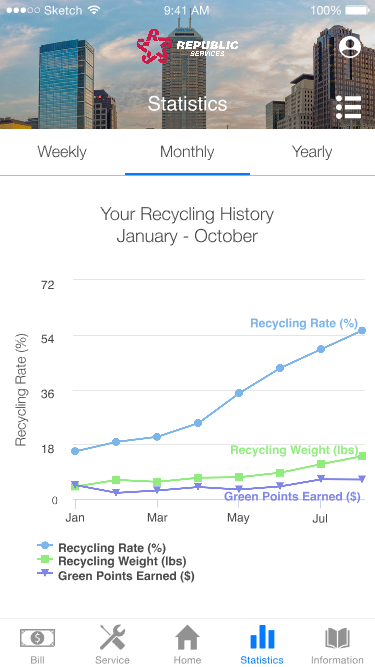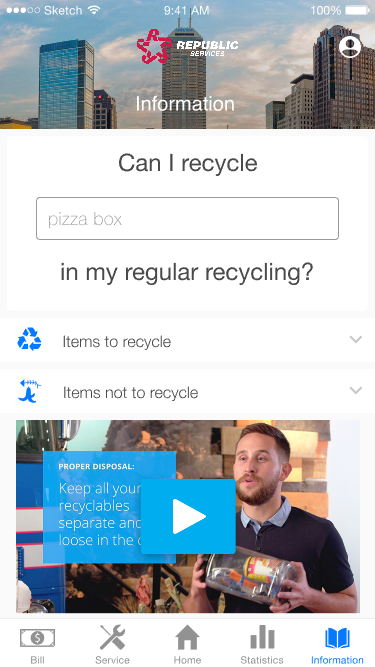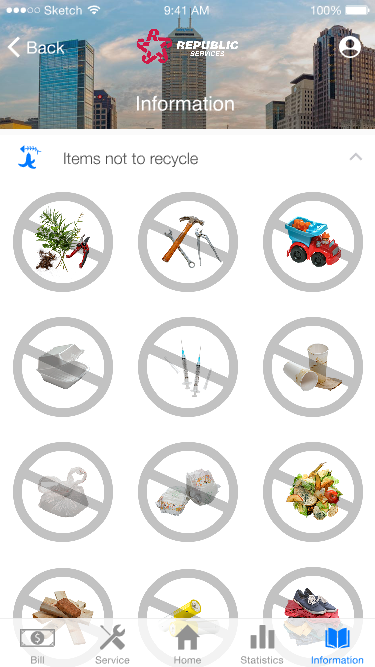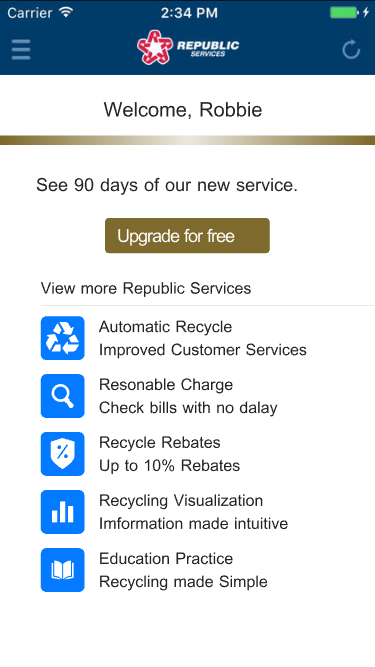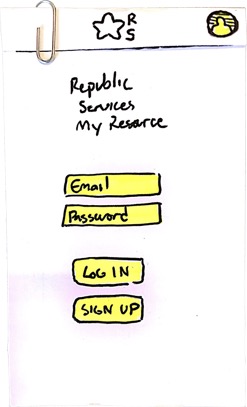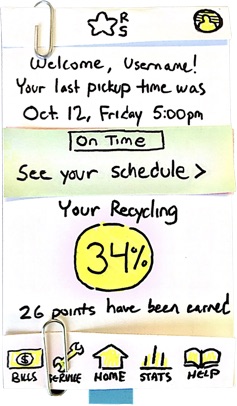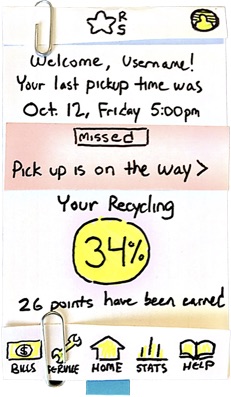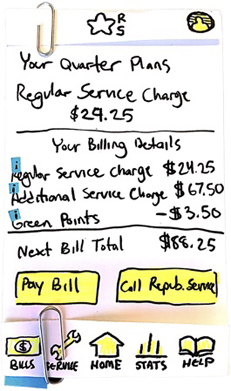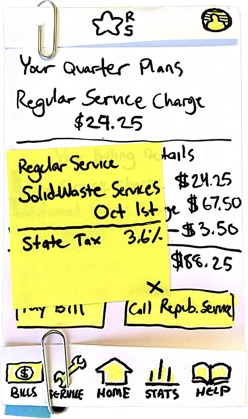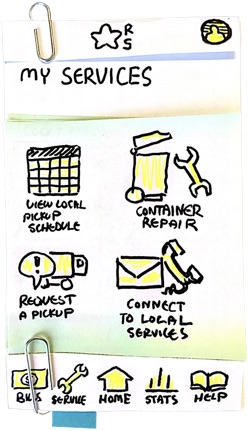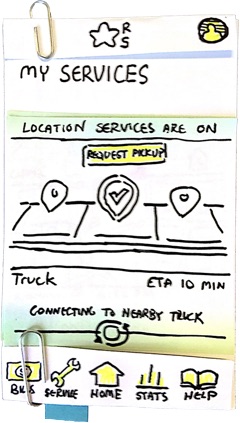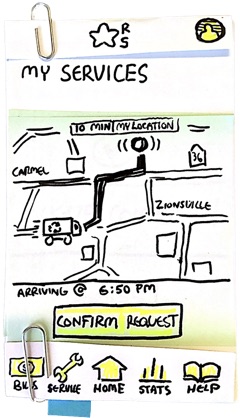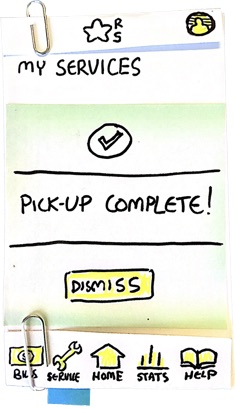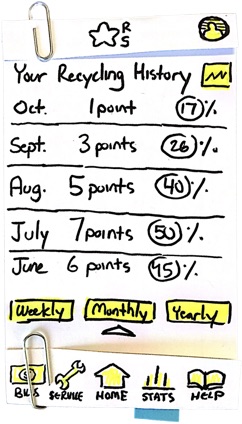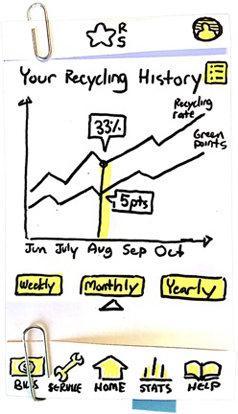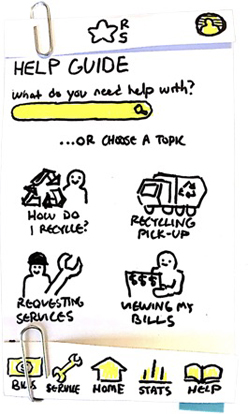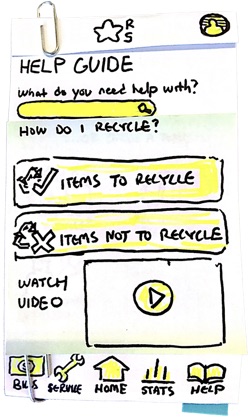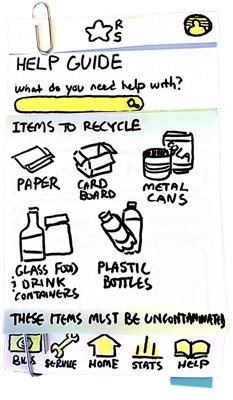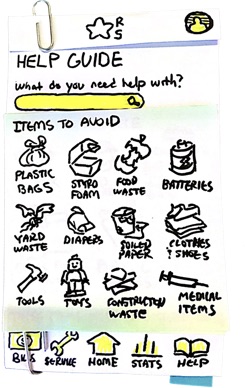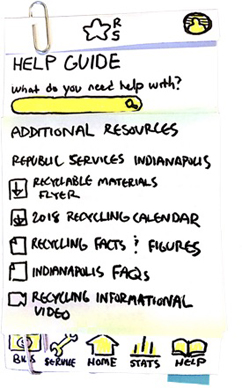OVERVIEW
About the Project
Our proposed design solution would rework the currently existing Republic Service My Resource mobile app by making improvements to the bills and services features, while also augmenting it with new features such as a statistics page to further visualize impact, a green points discount to incentivize further recycling and alleviate high bill costs, and an information guide to educate and fill knowledge gaps on proper recycling practices. By providing user-friendly tools and services to these preexisting technologies, we can help alleviate customer pain points while also strengthening community-driven recycling with a more satisfying user experience.
-
Role:
UI/UX Designer -
Tools:
Sketch, InVision -
Client:
Republic Service Inc. -
Timeline:
September 2018-October 2018
GOAL
The Challenge
In addressing the IUPUI Grand Challenge of Environmental Change, we seek to investigate how a difference can be made at a local and individual level by researching sustainability practices in the college campus setting. Alongside reviewing relevant literature, we collected qualitative field data through interviews and observations with people and places of interest within our problem space. From our findings, we learned about challenges and opportunities from both the standpoint of the individual college student and that of the wider campus administration.
RESEARCH INSIGHT
Problem Framing
Sustainability exists to encourage practices that help reduce resource consumption and waste to address the encompassing challenge of climate change. To reach the US Environmental Protection Agency’s (EPA) 2017-2022 recovery goals, we focus on the mission of the Office of Resource Conservation and Recovery (ORCR): “to protect human health and the environment by ensuring responsible national management of hazardous and nonhazardous waste.” One of their goals is to “conserve resources by reducing waste.” In Indianapolis, the recycling rate is 6%, and in Indiana, it is 16.7%. In successfully implementing sustainability initiatives for recycling, generalizability is a problem as there is evidence of variability in policies between states. We must use tools and resources at the state and local government level while also building technologies to give users tools for recycling management, engagement, and education. We understand that grants will go further and support recycling faster when other stakeholders throughout the supply chain.
Problem Synthesis
Key Requirement 1 - Appeal to the user’s convenience and lifestyle, give them something they can feasibly do within their social context and day-to-day life.
Key Requirement 2 - Help the user become educated and aware; make it clear what and what not to do, address what uncertainties they may have. Show them resources they can reach out to. Give them knowledge that can stick with them in the long-term.
Key Requirement 3 - Give the user incentive; show them benefits that can willingly encourage them to become engaged.
Key Requirement 4 - Empower the user; show them the positive impacts of practicing sustainability. Counteract feelings of helplessness, and show them that their actions as an individual can help make a difference in helping their community and the world.
Affinity Diagramming
USER PERSONA
Understanding the User
We use the first persona “Robbie” and third persona “Jason” in our two scenarios.
BRAINSTORMING
Exploring Ideas & Opportunities
Exploration 1 - Further education in recycling practices
Exploration 2 - Collecting, Measuring, and Visualizing sustainability impact data
Exploration 3 - Incentivizing sustainable practices
STORYBOARDING
Identifying Different Scenarios
Sustainability Edutainment Web show

-
Scenario 01 In this use case, we see Jason in his 1:00 pm 5th-grade science class. The teacher has decided to cover sustainability during the month of Earth Day, in which each class they would watch an episode of the “Teaching with Terry” edutainment web show. In this class, the students learn about the topic of recycling practices and are shown a ‘DIY’ activity at the end of the episode. The class then works in groups to do the hands-on activity, as shown in the episode.

-
Scenario 02 In this use case, we see Robert in his freshman year of college, where he is moving out to live on his own at his campus dorm for the first time. In his required first-year experience course, he is shown an episode of Teaching with Terry aimed at college students, where he’s given easy sustainability practices to help reduce dorm room consumption while also lowering his utility bills. With these practices taught to him early in his first year, he carries that knowledge throughout his college years and beyond.
WIREFRAMING
Low-Fidelity Prototyping
EVALUATING
Methods
When prototyping and conducting evaluations for our design solution, we centered our focus around four primary features that showcased our improvements and additions to the application. This consisted of running through tasks such as utilizing the information guide to view what proper materials to recycle, viewing the user’s bill details, utilizing the recycling truck pickup service, and viewing the user’s recycling statistics. When carrying out our evaluations, each of our team members conducted a self-cognitive walkthrough and a think-aloud evaluation with other potential users. Both of these were centered around going through each of the four key tasks previously described, where we sought to collect feedback on how well our implemented features appealed to the user’s experience in each task.
Key Evaluation Insights
Our evaluation insights included improving the mechanisms, semantics, and consistency of our prototype. First, the mechanism behind our design for the recycling pickup service went through a significant change. Second, the semantic meanings had different interpretations of the functions for different users. Our last key issue was in inconsistencies. We had identified some problems with the process of the task, such as some buttons missing in some screens.
FUTURE DIRECTIONS
Reflection & Next Step
With our design solution, our evaluation only focused on the new recycling features. Hence, we should consider conducting evaluations for the existing functions, and we have to work on the prototype for other peripheral functions. In case we want to convince Republic Service to adopt our design, we should provide a comprehensive design solution document and do usability testing for the complete app.
There are three future directions we would do next on the project.
First, consider a multi-family based model. Similar to a Netflix family plan, our application would have manageable roles of administrator users and standard users.
Second, we would follow up on the policy at the local level. As the country’s recycling industry is at a crossroads, we have to re-educate users about how to reduce contamination.
Last, as a way, the RFID can be used to track containers and verify services, there is further research to these sensors interfacing with dozens of different customer service software to further enhance community-driven recycling.

